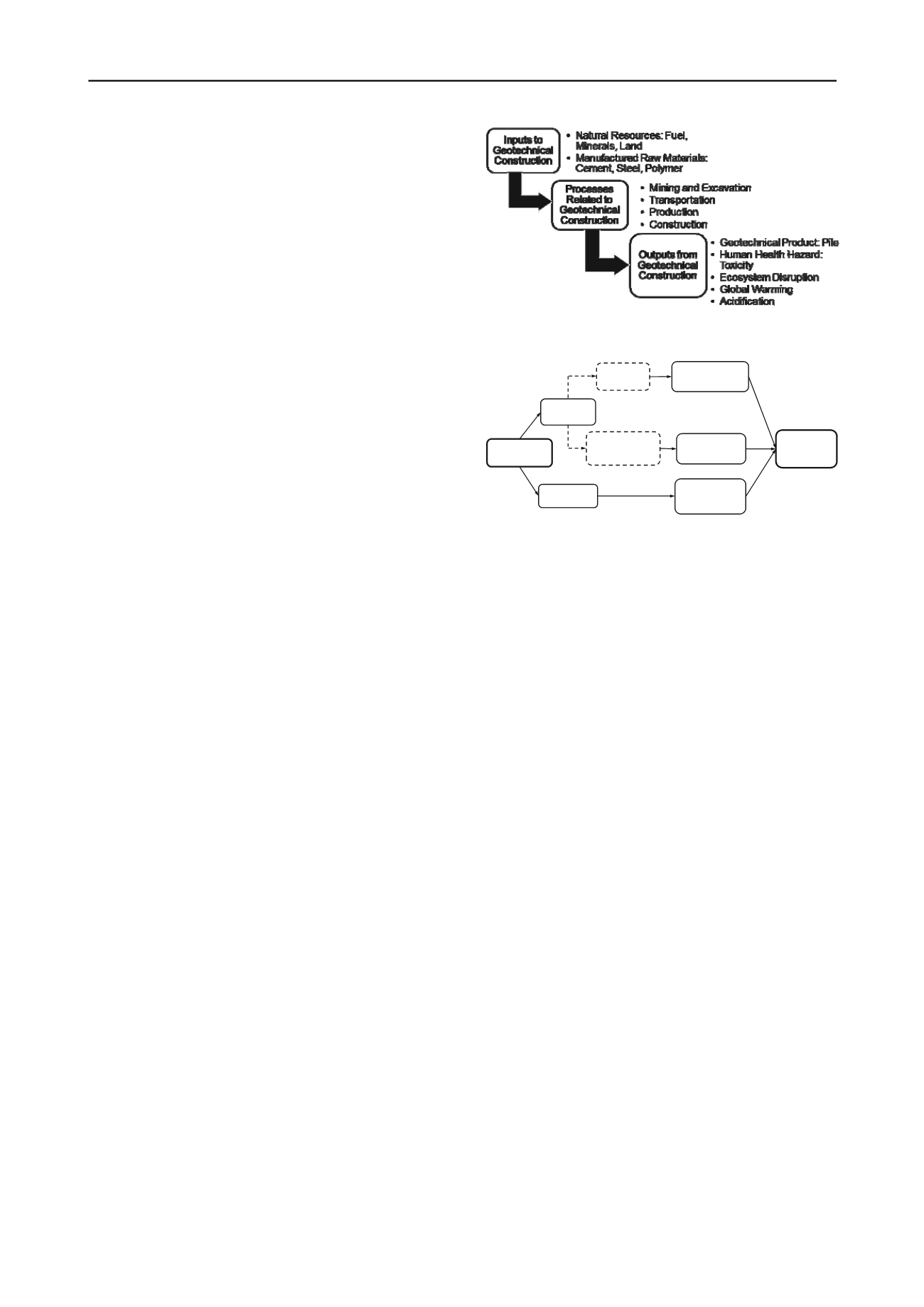
3173
Technical Committee 307 /
Comité technique 307
The Integrated Pipeline (IPL) project which involves a long
pipe line installation is a joint effort between the Tarrant
Regional Water District (TRWD) and Dallas Water Utilities
(DWU) that is aimed at bringing additional water supplies to the
Dallas/Fort Worth metroplex. As a part of the pipeline layout
and construction, large amounts of soil need to be excavated
during the pipeline installation. Also, large amounts of material
need to be imported for bedding and backfilling of the trenches.
Both importing new fill material and exporting excavated trench
material for landfilling will have serious implications on the
economic and environmental aspects of the construction project.
As a result, a research study was initiated at the University of
Texas at Arlington to identify chemical treatment of in-situ soil
material that can be reused as either bedding, zone or backfill
materials for the pipeline installation. Based on the
comprehensive laboratory studies, the soils along the pipeline
alignment are identified for potential reuse as backfill, bedding
and zone materials after chemical amendment, and more details
can be found in Chittoori et al. (2012). The cost and
environmental benefits as well as emissions reductions of using
in-situ native material versus imported fill materials are also
explained.
5 SUSTAINABLE FOUNDATION ENGINEERING
Foundations form an integral part of geotechnical construction,
and sustainable design and construction of foundations are very
important for overall sustainable development. Sustainable
foundation engineering entails robust analysis and design,
economical and environment friendly construction that cause
minimal disruptions to life and damage to adjacent properties,
reuse and retrofitting of existing foundations as much as
possible, and use of foundations in harvesting geothermal
energy.
Robust design of foundations essentially involves a rigorous
analysis (e.g., use of proper constitutive equations and analytical
or numerical modeling of appropriate boundary value problems)
and choice and execution of an appropriate design methodology
(e.g., identification of all possible limit states and moving the
design state sufficiently away from the limit states by either
using a reliablity based method or by applying load and
resistance factor design (LRFD) methodology). The recent trend
in geotechnical engineering to incorporate LRFD is encouraging
and several research studies have been conducted to rigorously
develop resistance factors based on reliability analysis (e.g.,
Basu and Salgado 2012). Further, the incorporation of random
fields to characterize spatial heterogeneity of soil in the
probabilistic analysis of foundations and related soil structure
interaction problems significantly contributes to sustainable
foundation engineering (Haldar and Basu 2011, 2012).
Misra and Basu (2011, 2012) recently developed a
multicriteria based sustainability assessment framework for pile
foundation projects. The framework considers a life-cycle view
of the pile construction process (Figure 2), and combines
resource consumption, environmental impact and socio-
economic benefits of a pile-foundation project over its entire life
span to develop a sustainability index (Figure 3). The use of
resources is taken into account based on the embodied energy of
the materials used, the impact of the process emissions is
assessed using environmental impact assessment and the socio-
economic impact of the project is assessed through a cost
benefit analysis. Three indicators are derived from the three
aspects and are combined through weights to calculate the
sustainability index (SI) for the different alternatives available
for the project (Figure 3).
Figure 2. Flow chart showing the inputs, outputs, processes and impact
categories in pile construction.
Geotechnical
Design
Life Cycle
Assessment
Cost Benefit
Analysis
Life Cycle
Inventory
Environmental
Impact
Assessment
Resource
Efficiency Score
Environmental
Impact Score
Socio-
Economic
Impact Score
Sustainability
Index
Figure 3. Multicriteria based sustainability assessment framework.
Reuse and retrofitting of foundations is a traditional practice
for almost all refurbishment projects, but recently the concept
has been extended for redevelopment projects as well (Butcher
et al. 2006a). Reuse of foundations is an attractive option
because the cost of removal of an old foundation is about four
times that of construction of a new pile, disturbance to adjacent
structures caused by foundation removal can be avoided, and
backfilling of voids created by the removed foundation is not
required. At the same time, the embodied energy consumed in
reusing foundations is nearly half of that consumed in installing
new foundations. Consequently, several case studies
demonstrating the benefits of reuse of foundations have been
documented (Anderson et al. 2006, Butcher et al. 2006b).
Foundation engineering has a prominent role in the
alternative energy sectors like geothermal and wind energy.
Case studies show that deep foundations can be used as energy
storage and transmitting elements (Quick et al. 2005) while
concrete surfaces in contact with the ground (e.g., basement
walls) can act as heat exchangers (Brandl 2006). Research is in
progress to develop proper characterization, analysis and design
of energy related geo-structures like energy piles (Laloui 2011),
wind turbine foundations (Doherty et al. 2010) and foundations
for oil and gas drilling operations (Yu et al. 2011).
6 CONCLUSIONS
In recent times, a concerted effort is noted within the civil
engineering industry in delivering built facilities that are eco-
friendly and sustainable. Geotechnical construction, being
resource intensive and by virtue of its early position in civil
engineering projects, has a great potential to influence the
sustainability of such projects. Incorporating sustainability in
geotechnical engineering requires an understanding of the
ideological conflicts that characterize sustainability and of the
approaches that can make engineering processes sustainable.
Philosophically, engineering sustainability can be looked upon
as the balance between engineering design, economy, social
equity and the environment (4 E’s).
Sustainability related research studies in geotechnology
essentially belong to two categories: those that contribute to
global sustainability through the use of alternative materials and
innovative engineering and those that develop sustainability
assessment frameworks. A summmary of these research studies
is provided with emphasis on two particular areas, ground


